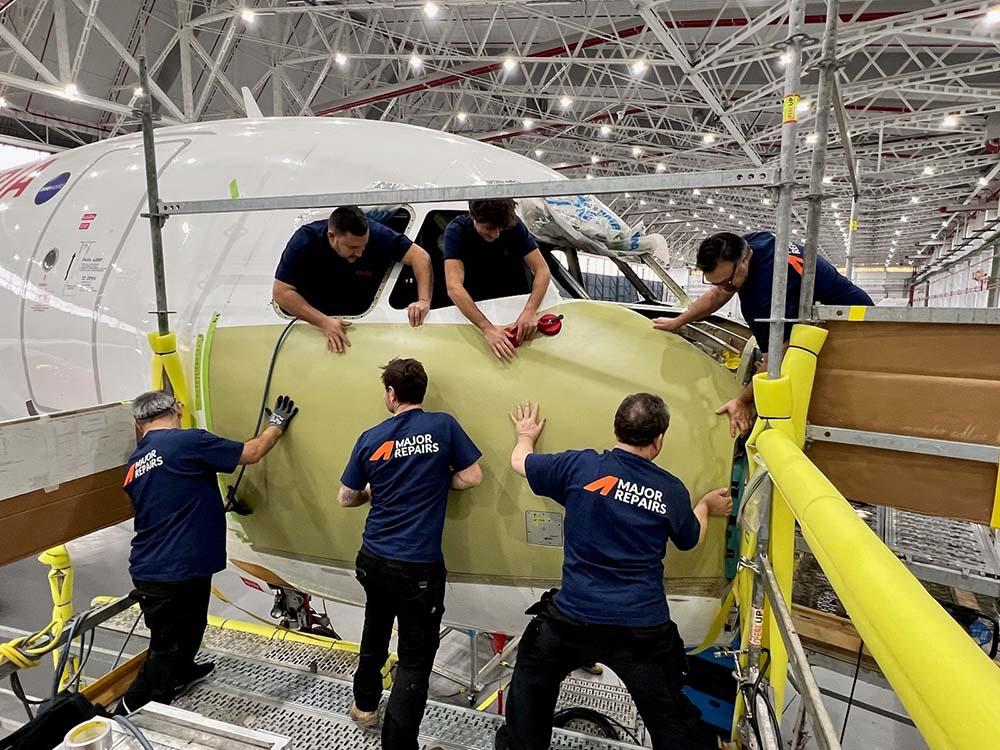
As the industry places more importance on aircraft recovery preparation, MRO provider FEAM Aero has diversified its portfolio to include major repair and recovery services.
The company invested in a full set of multi-sling equipment, straps and debogging kits and forged a relationship with a crane company with locations all over the U.S. to support any recovery, says Lindsey Gamell, director of operations, major repairs and aircraft recovery. “We have also put our Major Repair and Recovery [MRR] team through general familiarization training and a simulated recovery scenario,” she says.
In November 2023, FEAM was involved in the recovery of an Airbus A320 that veered off the edge of the taxiway at Cincinnati/Northern Kentucky International Airport. “The aircraft was pushing back when the gears got stuck off the tarmac in cold and icy conditions,” recalls Gamell.
FEAM says it dispatched its MRR crew to the scene to recover the aircraft without sustaining any secondary damage. “During the process of recovery, there is a need to document every step of the process and submit a full report to the airline,” says Gamell. FEAM has a standardized document it has developed to record every aspect in detail, including photographs.
FEAM also has repaired more than 30 severely damaged aircraft over the past two years for various airlines at locations such as Madrid, Marrakesh, Guadalajara, Johannesburg and across the US.
“Working in remote locations or in countries that don’t have a robust infrastructure always results in challenges,” says Gamell. However, she expresses confidence in a highly experienced MRR team and partnerships with logistics providers that have the expertise to navigate through such situations.
According to Gamell, some typical incidents that involve repairs include tail strike repairs from over rotation on take-off or hard landings, fuselage and frame damage from impact with cargo loaders or jet bridges, large corrosion repairs discovered from airworthiness directive and service bulletin inspections, and nose landing gear collapse repairs.
Such repairs can take anywhere from two weeks to three months depending on the scope of repair and level of damage, Gamell says. “At times, secondary damage is discovered, and the repair schemes are changed or increased throughout a project,” she adds.
Aviation authorities increasingly are demanding that airlines have some mitigation plan in place, such as access to an equipment pool through organizations such as the International Airlines Technical Pool (IATP).
Gamell acknowledges that many airlines are signed up to organizations such as IATP or other pool programs, but notes that those airlines also reach out to third parties for repair and recovery assistance, depending on location.
“Ultimately, these existing programs don’t solve every problem, and they can’t support the operator in every situation,” says Gamell.





